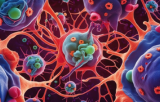Neurodegenerative diseases (NDDs) such as Alzheimer’s disease (AD), Parkinson’s disease (PD), amyotrophic lateral sclerosis (ALS), and Huntington’s disease (HD) are defined by the progressive loss of neuronal structure and function, leading to debilitating cognitive and motor deficits. These disorders are characterized by several cellular hallmarks, including pathological protein aggregation, synaptic and neuronal network dysfunction, cytoskeletal abnormalities, altered energy homeostasis, DNA and RNA defects, inflammation, and ultimately, neuronal cell death. Understanding the cellular and molecular mechanisms underlying these processes is critical for developing effective therapies.
The Role of Primary Cells in Neurodegenerative Disease Research
Primary cells, directly isolated from patient tissues or animal models, offer a physiologically relevant platform to study the pathogenesis of NDDs. Unlike immortalized cell lines, primary cells retain the genetic and phenotypic characteristics of the donor, making them invaluable for modeling disease-specific cellular dysfunction. For example, primary neurons and glial cells from affected brain regions can recapitulate key pathological features such as amyloid-β (Aβ) plaque formation, tau hyperphosphorylation, and α-synuclein aggregation, which are central to AD and PD, respectively.
Recent research has also highlighted the importance of non-neuronal primary cells, such as microglia and astrocytes, in driving neurodegenerative processes. Microglia, the brain’s resident immune cells, display high spatial and temporal heterogeneity in disease states. They can exert protective effects by clearing pathological protein aggregates but may also contribute to neurodegeneration through chronic neuroinflammation, impaired phagocytosis, and propagation of toxic proteins via extracellular vesicles. Similarly, primary fibroblasts from patients with familial forms of AD or PD have been used to investigate mitochondrial dysfunction, impaired autophagy, and stress response pathways, providing insights into early biomarkers and novel therapeutic targets.
Advances in Modeling and Mechanistic Insights
The advent of induced pluripotent stem cell (iPSC) technology has enabled the generation of patient-specific neuronal and glial cell models, allowing for the study of disease mechanisms in a controlled environment. iPSC-derived neurons from patients with familial AD mutations, for instance, exhibit increased Aβ production, mitophagy impairment, and mitochondrial dysfunction, mirroring in vivo pathology. These models have proven instrumental in dissecting the interplay between genetic risk factors, protein aggregation, and cellular stress responses.
Moreover, single-cell transcriptomics and proteomics have revealed the dynamic states of primary microglia and their association with distinct pathological features in NDDs, opening new avenues for targeted therapeutic intervention


